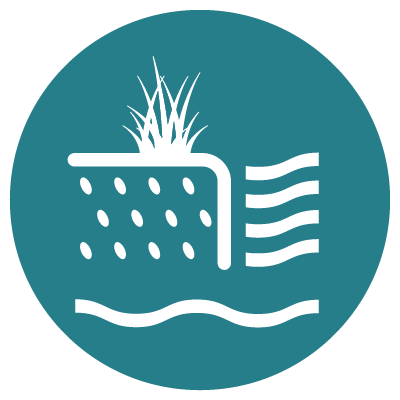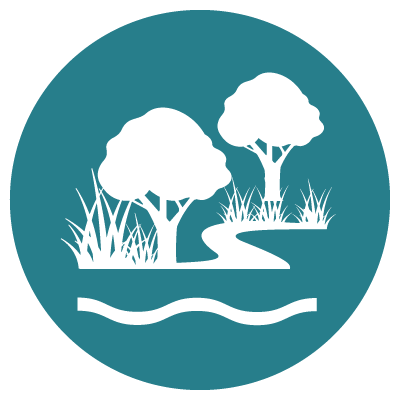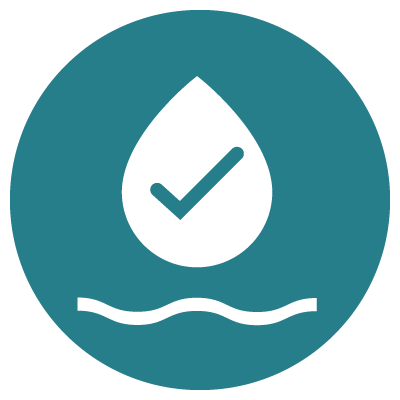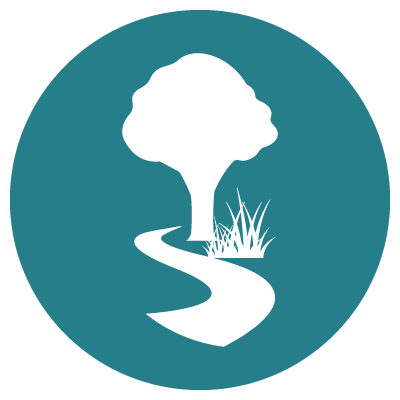Waterways provide a place to relax and be in the natural environment
People appreciate waterways as a place to relax and escape normal urban life. Many waterways provide restorative places where people can escape the urban environment and be immersed in nature. The sound of running water or frogs calling is a part of nature’s relaxing soundtrack. Estuaries provide the added value of access to coastal vistas. Waterways also influence amenity through their cooling effect on the micro-climate by providing shade and moderating local temperature.
People vary in their preferences when it comes to waterway amenity. Some prefer a grassed park-like waterway with many facilities to support gatherings and recreation. Others prefer a wild forested waterway. Providing a diversity of experiences across the region is important to support a range of community preferences and needs to be planned to minimise the potential for impact to environmental values.
Amenity is measured through community surveys
To assess how the community perceives the value of amenity of waterways, a region-wide survey is conducted. The survey typically samples over 2000 individuals and ensures coverage across the region and across age and gender.
To assess the level of satisfaction with the amenity of waterways only survey participants who identify the appreciation of nature or amenity as the primary reason that they visit waterways are used. Their response to the question “How satisfied are you with Melbourne’s waterways being suitable for how you use them?” is used to measure satisfaction with amenity. In addition to the survey, the amenity value for estuaries is assessed by considering the presence of facilities and activities that support passive enjoyment of sites.
For wetlands, the limited data on amenity meant the baseline was unable to be established in 2018. The strategy includes an action to better understand social values of wetlands and this work has already been initiated.
A process to review and update indicators for the social values has started. It is expected that new indicators will be implemented after the mid-term review. A region wide evaluation of amenity will be undertaken during mid-term and final reviews of the strategy.
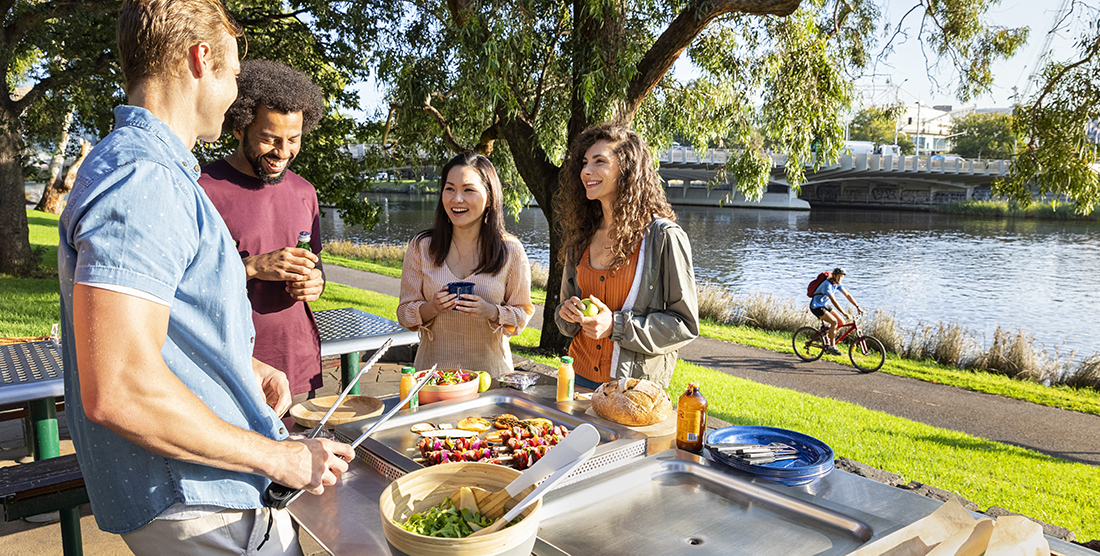
Amenity baseline and targets
2018 baseline: waterway amenity was measured in 2016 through a Community Perceptions Survey.
2068 target: the target represents where we want to be in 50 years and is what can be achieved with an increase in coordinated, collaborative and prioritised effort. It is the scenario that the strategy partners have agreed is required. The ‘target trajectory’ includes assumptions on managing access, vegetation and litter.
Without a coordinated effort to provide key services such as the shared paths, litter and vegetation management the level of satisfaction with amenity is expected to decline, especially as urbanisation and population growth continues.
A region wide evaluation of amenity will be undertaken during mid-term and final reviews of the strategy.
Number of waterways in each catchment by amenity score
Hover, click or tap (on mobile) the charts below to view more information.
Baseline and trajectories in Rivers
Baseline and trajectories in Estuaries
Conceptual models show the links between waterway conditions and amenity
Conceptual models are a summary diagram that simply illustrate which conditions are most important for the health of amenity. Actions that can improve environmental and social conditions are linked via box colours.
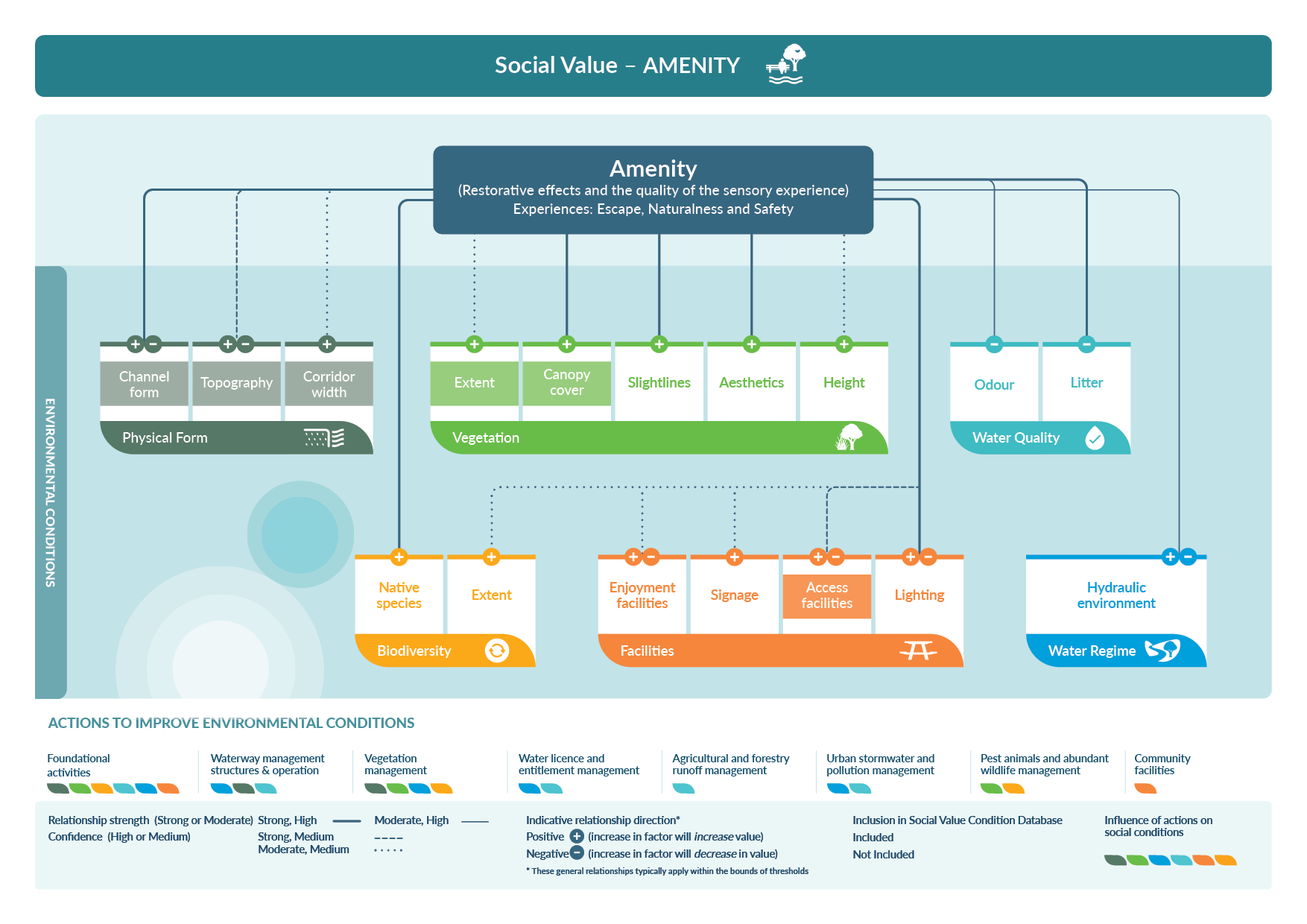
Download the amenity conceptual model (255 KB)
More information on the conceptual models can be found in the Healthy Waterways Strategy Technical Resource Document.
Changes in waterway conditions can influence amenity
The conditions that influence amenity are described below. Some of the more important ones are monitored over time so that we can track whether actions taken in the strategy are leading to improvement.
Physical form
The way the physical form of a waterway is managed (and in some cases constructed) impacts amenity. A concrete channel versus a natural vegetated waterway impacts the sense of naturalness. Hearing water flowing over riffles in the stream improves the sense of naturalness of a waterway.
Vegetation
Vegetation is an important part of waterway amenity. It can be managed to provide views of the waterway from walking paths and lookouts, and to block views of buildings. Vegetation can influence how safe people feel along waterways. For example, keeping vegetation back from paths and ensuring clear sight lines along paths can improve the sense of safety.
People have a range of preferences when it comes to the vegetation. Some prefer a grassed park-like waterway, others a wild forested waterway. This means a diversity of experiences is important in providing for the different desires in the community and to minimise the potential impact on the environmental values of the waterways.
See waterway conditions - vegetation for more details on how vegetation is monitored.
Water quality
The presence of water which is free from odours and litter adds to the sense of naturalness and amenity.
See waterway conditions - litter for more details on how litter is monitored.
Access and facilities
The presence of access paths and facilities such as signage and lighting enable people of all ages and physical abilities to get to the waterway to spend time there. Provision of these facilities needs to be balanced to minimise the potential impact on the environmental values of the waterways. Providing a wide range of access opportunities is required to meet the community’s diverse needs.
See waterway conditions - access for more details on how access to waterways is monitored.
Water regime
Being able to see and hear running water adds to the sense of naturalness and amenity along waterways for many. Lack of natural flows in some systems can lead to water quality issues such as algae growth that detracts from the visual amenity of the waterway.
See waterway conditions - water for the environment for more details on how water regime is monitored.
Actions that improve the amenity of waterways
There are a range of actions that can improve amenity for rivers, wetlands and estuaries and the performance objectives that are tracked in the annual report align with these. More information on how the strategy progress is being tracked can be found in the Report Card.
Establish buffers and maintain vegetation quality
Vegetation can be used in different ways for amenity. Areas of grass amongst a canopy of tall trees provides a park-like setting, while more intact native vegetation can provide a greater sense of escape to nature. Vegetation can be managed to maintain views of the water and to block buildings from sight. Vegetation can provide local shading and cooling.
Sometimes the amenity requirements align with the biodiversity requirements, and sometimes they differ. Being aware of the different requirements and managing for both across the region creates a patchwork of areas that support both the social and biodiversity outcomes along waterways.
In the Strategy, targets have been set for extending vegetation buffers and improving vegetation quality across most of the region for rivers, wetlands and estuaries.
Naturalise waterways
Transforming old-style concrete channels or waterways that have been piped underground a long time ago into more natural spaces can provide valuable open space and change the way the community engages with the waterway.
See RPO-19 in the Community section of the regional performance objectives for details on actions to transform modified waterways.
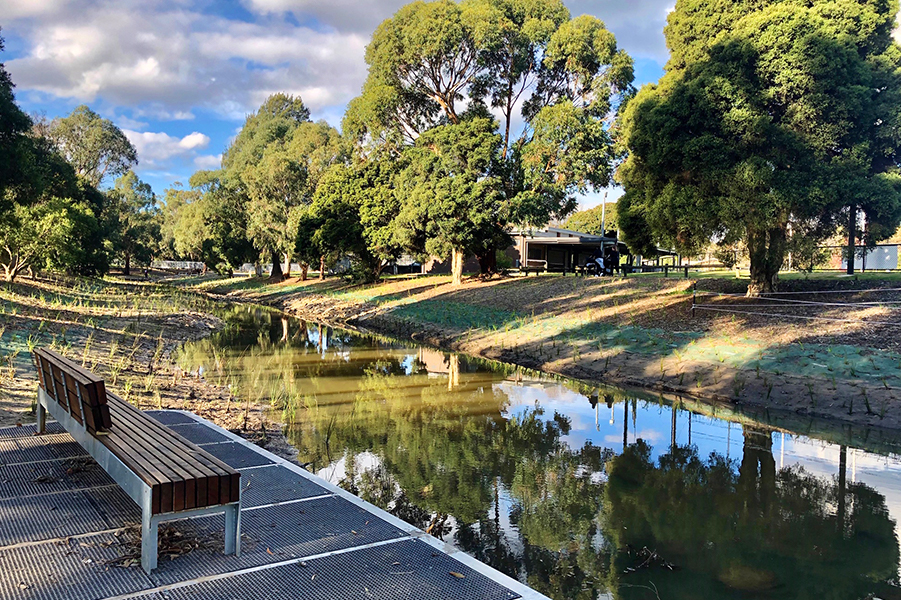
Case study: Delivering social outcomes in our communities through waterway improvements
Melbourne Water has been prioritising the ‘daylighting’ of some underground sections of urban creeks to improve the amenity value for the community.
Enhance habitat for biodiversity
Seeing birds and hearing frogs along waterways provides a connection with nature. Habitat can be managed to attract birds, frogs and fish through the management of vegetation, flows and physical form of the stream to provide a variety of habitats – e.g. riffles, pools and small areas of natural erosion for birds and platypus to build their nests in. Minimizing human impacts to critical areas to prevent impacts on breeding is also part of enhancing biodiversity.
In the strategy actions such as protection of roosting sites for birds in estuaries and improving fish passage in rivers support habitat for the environmental values.
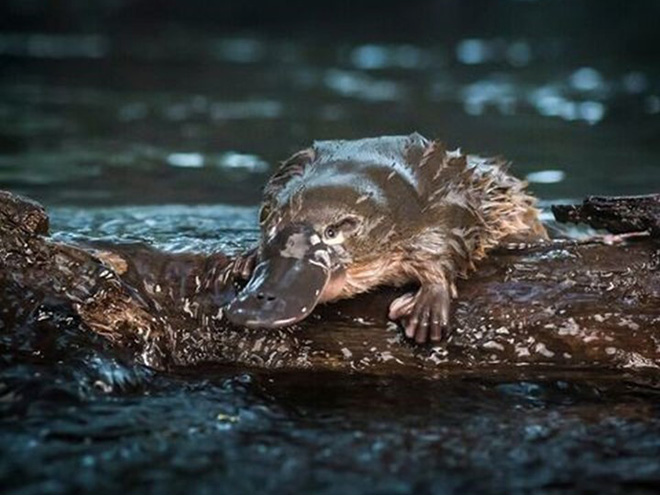
2023 Case study: Planting 4 Platypus
Platypus in the Diamond Creek in Melbourne’s north east are feeling the love from their local community who are working hard to improve the creek habitat.
Manage urban development to protect waterways
Planning controls are a foundational activity to ensure urban development maintains access and open space along waterways. Planning controls also manage the built form and help to ensure buildings do not encroach on waterway corridors and limit sight-lines that helps to preserve the sense of nature.
See RPO-15 in the regional performance objectives under Management for details on the relevant actions.
Provide community facilities to enable enjoyment of waterways
The provision of safe access paths and signs, facilities such as park benches, open space and picnic tables allow people to linger and learn about waterways. Canoe and boat launching areas allow people to access waterways for boating and recreation. Pathways provide spaces for running, walking and cycling. Lighting helps people feel safe at night.
In the strategy actions such as increasing access paths supports waterway amenity.
Improve water quality
Litter and odours detract from the amenity of waterways. Improving litter management improves the visual amenity of waterways. Odours can be improved through actions to target better stormwater management, improved water quality and flows.
See RPO-26 and RPO-27 in the regional performance objectives under Community for details on the relevant actions.

2023 Case study: Collaboration is key — Tackling the tricky issue of litter together
Litter in waterways continues to be of great importance for our community. Not only is it unsightly and can entangle animals, it represents the impact that invisible pollutants in run-off can have on waterways.
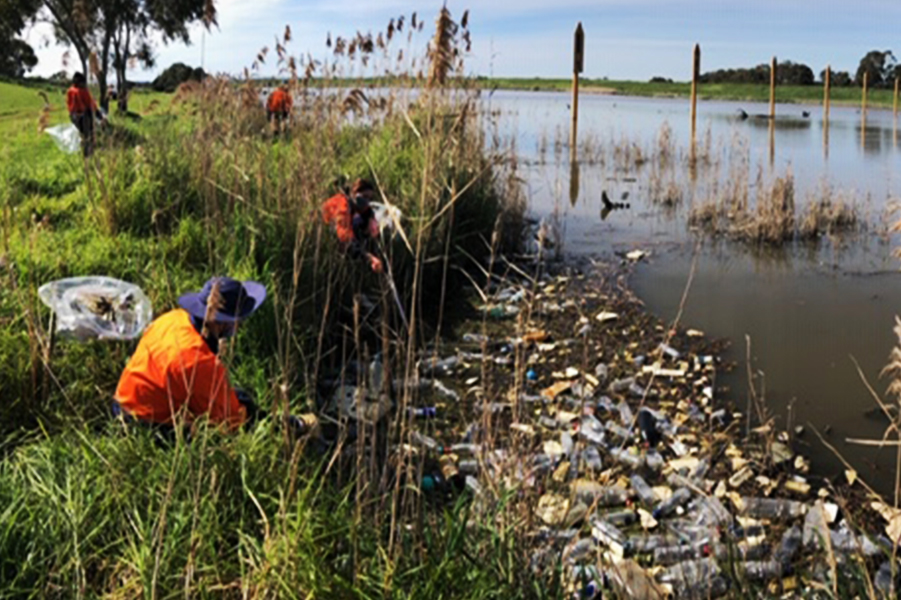
2020 Case study: Litter Trackers - Understanding litter transport in Melbourne’s waterways
Litter is a significant problem in waterways and most of the sources of litter arise from our suburban streets. Litter tracking studies using plastic bottles with small GPS tracking devices inside collected data to show how far and how quickly litter travels through drains and waterways to the sea.
